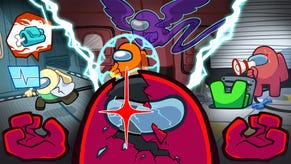Touchy Feely
Gamasutra have an article up discussing 'game feel'. It's one of the the aspects of gaming that we writer types have the most trouble in describing comprehensibly. The intro to Steve Swink's article captures some of the reason for that difficulty, and the nebulousness of the concept:
Proxied embodiment. Game feel. However you describe it, it’s hard to deny that the sensation of controlling a digital object is one of the most powerful -- and overlooked -- phenomena ever to emerge from the intersection of people and computers.
There are lots reasons for this, but the main one is that game feel is slippery. It’s mostly subconscious, a combination of sights, sounds, and instant response to action. It’s one of those ‘know it when you feel it’ kinds of things. If it’s off by just a little bit, a game’s goose is cooked. If it’s “responsive”, “tight”, and “deep”, it can be magical.
The article goes on to look at various elements of what makes feel good in certain games, and not others. It's a developer-focused article, giving some idea about how developers might create a 'garden' testbed for getting feel right in their game. More on this subject after the hop.
I've been thinking a great deal about 'feel' and wondering how best to talk about it. The problem, I think, is that discussion of this stuff ends up getting quite complex, even academic, and that's just bothersome for a casual readership and the writer. I've been bashing out a book over the past few months and it's impossible not to touch on the subject in a few places. I realise now, with the blasted thing almost at the printer, that I've failed to deal with it in any suitable fashion...
Anyway, one of the quotes I dug up during the book writing seems relevant here. It's from an essay by RPS chum Matt Jones, in which he talks about the relationship between play and design: "“Whether thrilling or relaxing, one thing that games designers can teach those wrestling with other more general forms of interaction design is a mastery of ‘flow’. Identified by psychologist Mihaly Csikszentmihalyi, flow in human experience "is a mental state of operation in which the person is fully immersed in what he or she is doing, characterized by a feeling of energized focus, full involvement, and success in the process of the activity" (to use the Wikipedia definition). Flow and play are inextricable – Csikszentmihalyi refers to the "playground" environment necessary to attain a flow state, and the balance of challenge and ability that governs the flow state is essential to the sustenance of good play."
I can't help thinking that what people are talking about when they refer to the 'feel' of a game is its capacity to get us into a flow state. We reject games with a poor feel because we aren't able to get into that state. It's somehow analogous to listening to music: we're just able to enter the pattern completion of certain types of music, while our tastes seem to reject others. Games with bad feel can still be played, but they irk us, like dancing to music we don't enjoy.
The issue of game feel arises because of the organic, tactile nature of most videogames. It's particularly acute when there's a continuous feedback loop between the player and the game, as in action games like the Mario games cited by the article. That loop - information on the screen that we respond to, which then changes thanks to our response, which then causes us to respond, ad infinitum - is why "feel" needs to be carefully measured and considered by game designers. I've been playing various games all weekend that could have done with a little more fine tuning with the feel business. Universe At War's camera is too slow and too closely cropped, and delivers a mildly claustrophobic experience, for example. In a completely different way, Unreal Tournament 3's 'damage-feel' doesn't quite have the right visual and kinetic effect on your experience for your to understand where pain is coming from, and how intense it is. And that's a bound up with the spectacular effects the team employed:
Then again, feel almost always ends up being ludicrously subjective, as every discussion of the climbing/jumping aspects of Assassin's Creed seem to reveal. (I think that's the best part of the game, while John is appalled at the weird demotion of the jump button.)
So perhaps what best characterises "feel" is the extent to which game controls and game feedback allow the inertia of your playing the game to develop, and how regularly it cuts it off. If the game seems to flow physically and experientially, we're happy and comfortable with it. The beginning of Assassin's Creed stop starts and doesn't really allow us to just get on and evolve the experience at our own pace. The later game - the city sections - are far smoother and allow us to get into the zone a little more deeply.
When a game stop-starts and makes us feel clumsy, our sense of flow is lost. I think this ties into the reason why we become rapidly bored of some games, while others balloon into whatever time we can give them. The better the feel, the more involved the flow, the less we seem to be aware of the passing of time.
Of course "good feel" is only ever going to emerge from an averaging of player tastes and expectations. It seems that that's only going to be possible via obsessive playtesting and educated responses to the findings of those playtesters. There's a reason why Blizzard games have captured so many spare hours, so readily: we're almost never bumped out of enjoying them by the way they feel. That, I think, can only come out of making a game that everyone finds easy to play.









